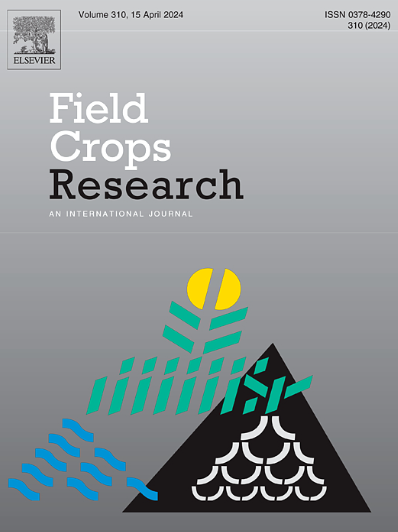Long-term management strategies to optimize phosphorus utilization in a tropical maize and soybean succession
IF 5.6
1区 农林科学
Q1 AGRONOMY
引用次数: 0
Abstract
Context or problem
The efficiency of phosphorus (P) input utilization in Brazilian agricultural systems is low (50 %) but can be improved by adopting appropriate management strategies.
Objective or research question
The objective of this study was to assess and quantify the combined long-term effects of soil tillage and rates and forms of P fertilizer inputs on soybean [Glycine max (L.) Merr.] and maize (Zea mays L.) yield, P use efficiency and soil P availability in a high P-fixing tropical soil.
Methods
A comprehensive 22-year field experiment was undertaken in a Brazilian Cerrado soil with two soil tillage systems (conventional-CT and no-tillage-NT) combined with five P fertilizer management, being two sources of P [triple superphosphate (TSP) and Gafsa reactive phosphate rock (RPR)], under two annual rates of P (22 and 44 kg ha–1), and one control (no P application). Measurements included crop yield, removed P, partial P balance, and soil P [total P, legacy P, and labile P (Mehlich-3)].
Results
The NT and CT systems were equally productive. Plant yield responses were similar for TSP and RPR when 44 kg ha–1 of P was applied annually, although maize grain yield was 6 % higher for TSP compared with RPR at the lower rate of P application (22 kg ha–1 yr–1of P). The low P input rate was not enough to meet crop demand since the partial P balance was 131 % compared with 80 % for the high P input rate, both under TSP application. The same behavior was verified under RPR application, being 115 % compared with 74 % for the low and high rate of P, respectively. In the soil, CT system showed narrower differences between treatments, with a homogeneous distribution of P in depth compared with NT, while the NT system resulted in enhanced P accumulation in the topsoil, especially at the high rate of P fertilizer input.
Conclusions
Our findings indicate that the use of an intermediate rate between 22 and 44 kg ha–1 yr–1 of P by RPR or TSP, especially under NT, is a recommended management strategy to optimize P utilization by maize and soybean while increase soil P bioavailability in a high P fixing tropical soil.
Implications or significance
This study confirms that improving phosphate fertilization and soil management practices is key to ensuring the sustainable and efficient utilization of P in tropical agricultural systems.
求助全文
约1分钟内获得全文
求助全文
来源期刊

Field Crops Research
农林科学-农艺学
CiteScore
9.60
自引率
12.10%
发文量
307
审稿时长
46 days
期刊介绍:
Field Crops Research is an international journal publishing scientific articles on:
√ experimental and modelling research at field, farm and landscape levels
on temperate and tropical crops and cropping systems,
with a focus on crop ecology and physiology, agronomy, and plant genetics and breeding.
 求助内容:
求助内容: 应助结果提醒方式:
应助结果提醒方式:


